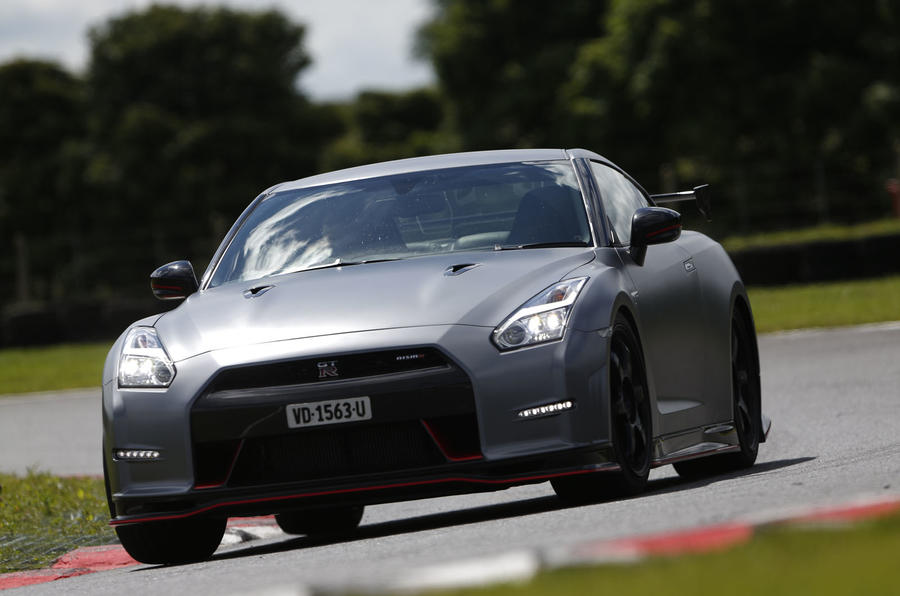What is it?
Where do you start when trying to describe a car like the new £125,000, 591bhp Nissan GT-R Nismo? I mean it does so many things that can fry your mind – metaphorically, mathematically and physically, often all at the same time – that you can’t help but be overwhelmed by it, at least to begin with at any rate.
And perhaps the most amazing thing of all about the genuinely amazing new GT-R Nismo is that, fundamentally, it’s based on a car that’s now seven summers old. The original GT-R was launched in 2007. I remember, because I went to Japan to drive it. I also remember flying back to the UK with the outer edges of my imagination in tatters about what it could do.
But this new Nismo version is something else again. Dynamically it represents not just a small step but a leap forwards in every direction, and having driven it on both road and track in the UK, I’m struggling once again to get my head around how it can do what it does.
So what’s new about it? Lots. The 3.8-litre V6 twin-turbo engine is basically an extensive chipping job with some upgrades to the key bits of the internals to prevent it from trying to eat itself on high boost. Power rises to 591bhp, torque to 481lb ft, both of which represent fairly slight increases given the £47k price hike compared with the standard 542bhp GT-R.
But the engine is not where the time and money was spent in creating the Nismo GT-R. Instead the car’s engineers focused on improving the bits they knew would make the biggest difference at their holy grail: the Nürburgring. And to make the Nismo GT-R as fast as it could be around the Nordschleife they centred on the suspension, the four wheel-drive system, the tyres and, most of all, on the aerodynamics.
As such, the Nismo has all the usual suspension upgrades you’d expect; stiffer springs, bigger (but lighter because they are hollow) anti-roll bars, ultra trick adjustable Bilstein dampers and a set of phenomenally sticky tyres that were developed bespoke for the car by Dunlop. Even when cold you can tell just from the tread pattern that the Nismo’s tyres are a bit naughty, but get some heat into them and then give them a prod and they feel as soft as a Haribo on a hot summer’s day. Which equals grip, basically, and lots of it.
But what’s made arguably even more difference, certainly to the way the car drives, are the alterations in geometry to both the front (double wishbone) and rear (multi-link) suspension. New links for the wishbones at the front and modifications to the hubs front and rear have, in conjunction with a slightly stiffer bodyshell thanks to new bonding tenchiques compared with the standard car, enabled the Nismo’s engineers to set the car up in a much more aggressive way. We’ll come to the results in a moment.
You can see the new body parts with your own eyes, and whether you like what they do for the GT-R’s appearance or not is, of course, entirely subjective (I personally think it looks fantastic, though I’m not sure what the neighbours would think with one of these things parked on the drive). But what you can’t possibly appreciate until you drive it is how much extra downforce the Nismo’s various new skirts and spoilers help to produce.
Nissan claims as much as an extra 100kg above 100mph; whatever the number and whatever the speed required to generate it, you can feel the thing squeezing itself into the ground, feeling more in control of itself, through pretty much any corner taken at more than 60mph.



































Join the debate
Add your comment
Speed not enough
MRCW wrote:If I had 125k to
I'd have a GT40 in a
It may say something about the type of person that I am, but I think the standard GTR is expensive and wouldn't pay the extra for this if I had that sort of money to spend.
I just think they need to come back down to earth at little an hope that the next GTR isn't more money than the current GTR, but is aimed at a lower price, slightly higher volume, big bang for a sensible buck.
Unlike the brand snobs (slaves)